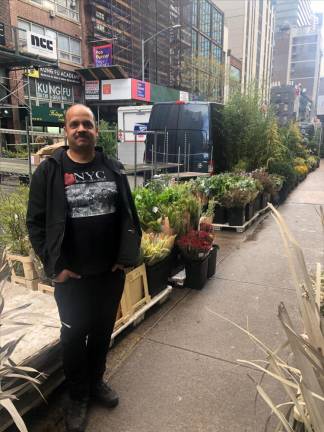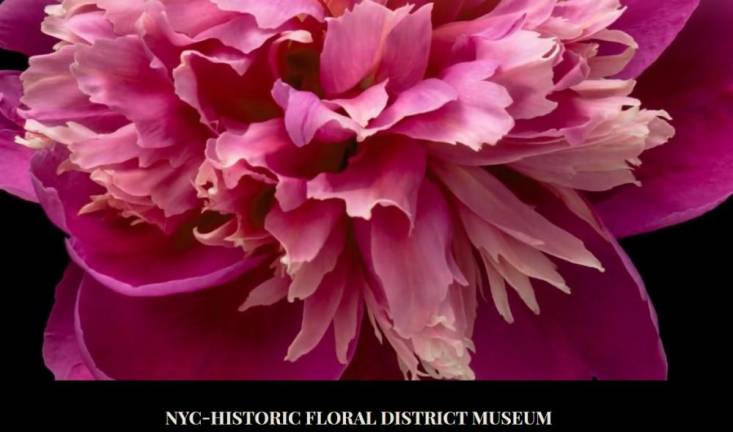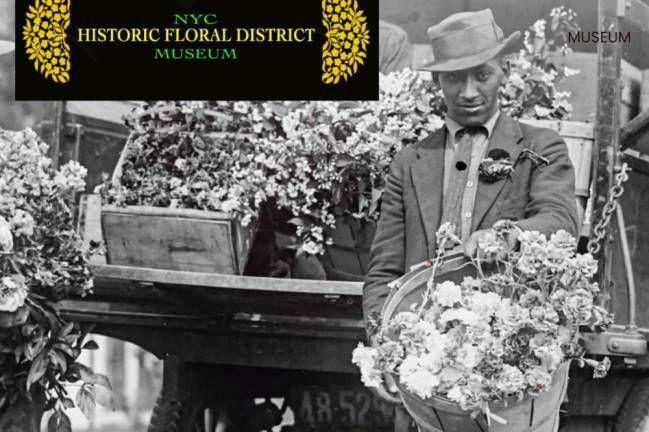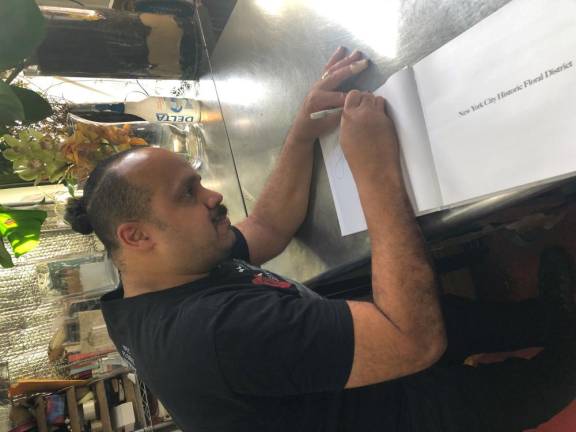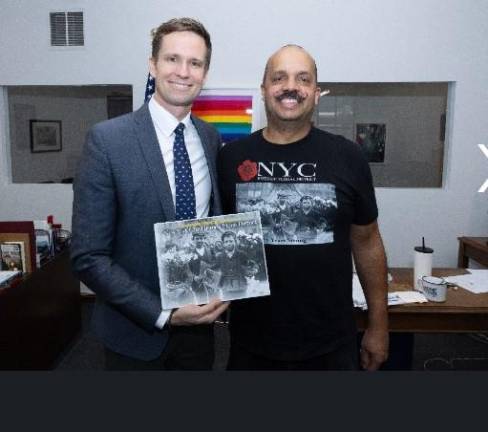Floral Designer Turned Author Seeks to Raise $30M to Launch Museum of Flowers in Chelsea
James Francois-Pijuan, who just published a book on the 175-year history of the city’s Floral District, hopes to raise $30 million to start thecity’s first Museum of Flowers in Chelsea. He’s launched a not for profit corporation and launched a web site.
He’s spent a lifetime in the floral design business, now 55 year old James Francois-Pijuan has embarked on an ambitious plan to try to raise $30 million to establish the first ever Flower Musuem, preserving the legacy of the iconic district for posterity and helping future generations learn the trade.
”I fell in love with the industry and the community,” he said in a recent interview in his studio in the Floral District on W. 28th St. between Sixth and Seventh Ave.
He’s just published a book, “New York City Historic Floral District” celebrating the 175-year history of the Flower district. “In creating the book, I feel it can be a stepping stone to starting the museum.” And he’s formed a not for profit corporation and launched a web site https://www.flowermuseum.org/as the first steps toward realizing his dream.
The Bronx-born designer says he was first intrigued by world of flowers while working as a bellman on the overnight shift at the Waldorf Astoria after graduating from the Parsons School of Design.
”They used to throw out all the flowers after their events,” he recalled. He would grab some and make arrangements and bring them home to his girlfriend and now-wife Corrine.
When he started working as a cater waiter, he noticed floral arrangements on the tables and said, “I can do that.” In the mid-1990s he started a business called Wedded Bliss, but said he changed the business to his surname a few years later, calling it Francois-Pijuan Floral & Event Design Company and has been running it for over 25 years.
His book traces the 175-year history of the city’s flower district that once was centered on Canal Street in the late 1700s to early to mid-1800s. It moved to Union Square in the late 1800s and early 1900s. At the time, most of the flowers were from potted plants since there was no refrigeration. His book does show gentlemen in top hats buying azaleas, chrysanthemums, hydrangeas and daisy plants in the Union Square Floral Market.
As greenhouses and refrigeration took hold, it was a boon to the world of flowers. By 1900, he said there were 237 greenhouses growing flowers in New York State and many sold their goods at the Union Square Floral Market.
Eventually, as New Yorkers moved uptown, the flower district followed.
At one point, the flower district stretched from 23rd to 30th and from Broadway to Sixth Ave. It was a powerful stepping stone for immigrants to advance. By the 1940s, there were 50 flower wholesalers.
Eventually, as the industry shrank, it came to be concentrated largely on a vibrant one-block area on W. 28th St between Sixth and Seventh Ave. where it is anchored today.
Today, he says there are less than a dozen wholesalers left, and maybe another 50 vendors.
”We’re trying to save those industries,” he said.
Jill Brooke, editor of Flowerpowerdaily.com, “It’s a very ambitious project but also reflects how flowers have rooted in people’s hearts and minds....New York has also been an epicenter for floral design because of the fashion, interior design, travel and entertainment flourishing here and willing to pay for many floral talents. It’s a very flower loving public.”
That has to be encouraging to Francois-Pijuan, who concedes of his fundraising efforts for the museum, “We’re in the very early stages.”
He recently met with City Council member Erik Bottcher and said he found the local council member was “very supportive.”
Bottcher posted pictures of the meeting on social media and wrote: “Had a great meeting with James Francois-Pijuan discussing exciting future plans for the NYC Flower Museum and to receive a copy of his incredible book, “NYC Historic Floral District: 176 Years Strong.” I’m proud to represent our thriving floral industry in the district, rooted on 28th Street for 175 years.”
Notes Francois-Pijuan, “It is one of the last industries that is still surviving in New York. There’s no meat packing going on in the meatpacking district. The garment industry is barely hanging on.”
Ironically, it was the pandemic that spurred him into action. He was making an online directory of the wholesalers and related industries and included a short history of the floral district on the web site.
“The more I dug into it, the more fascinated I became,” he recalled. “I said ‘I have to share this’.” And that was how the floral industry picture book came about.
But now he says, “I felt I had to take it a step higher.” Last May, on Mothers’ Day weekend, he got three neighborhood hotels, two wholesalers and 5 other floral related businesses to toss the first ever Mother’s Day Floral District Block Party.
“It was a very nice day, but I feel there is a bigger need to try to salvage the industry in New York. That’s when I decided to try to start a floral museum.”
He said the long term plan would be raise $30 million to buy a building on the block for anywhere from $5 million to $15 million and use the rest to renovate and open it up. He said he would hope it can do everything from workshops to party events for individual and companies while preserving 175 years of history through pictures, videos and displays from long ago to the present day.
The floral industry is a beautiful industry,” Francois Pijuan says. “It has helped thousands of immigrants escape poverty. Now I hope we can help the industry that has helped so many people.”
